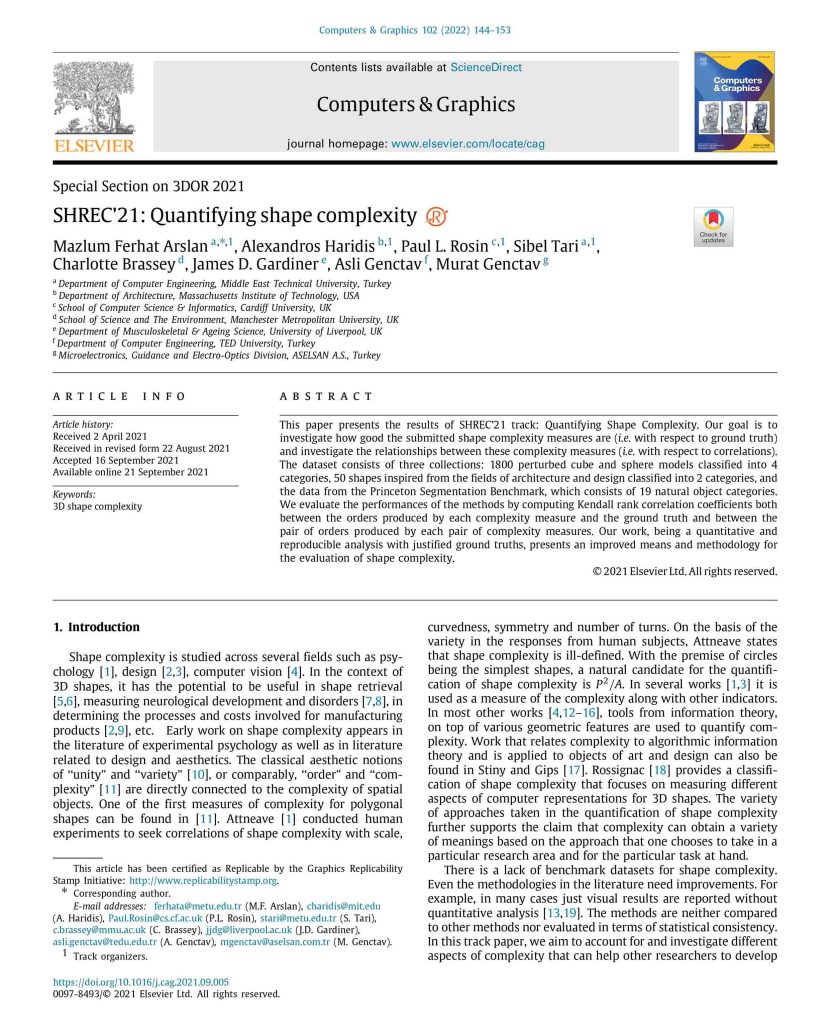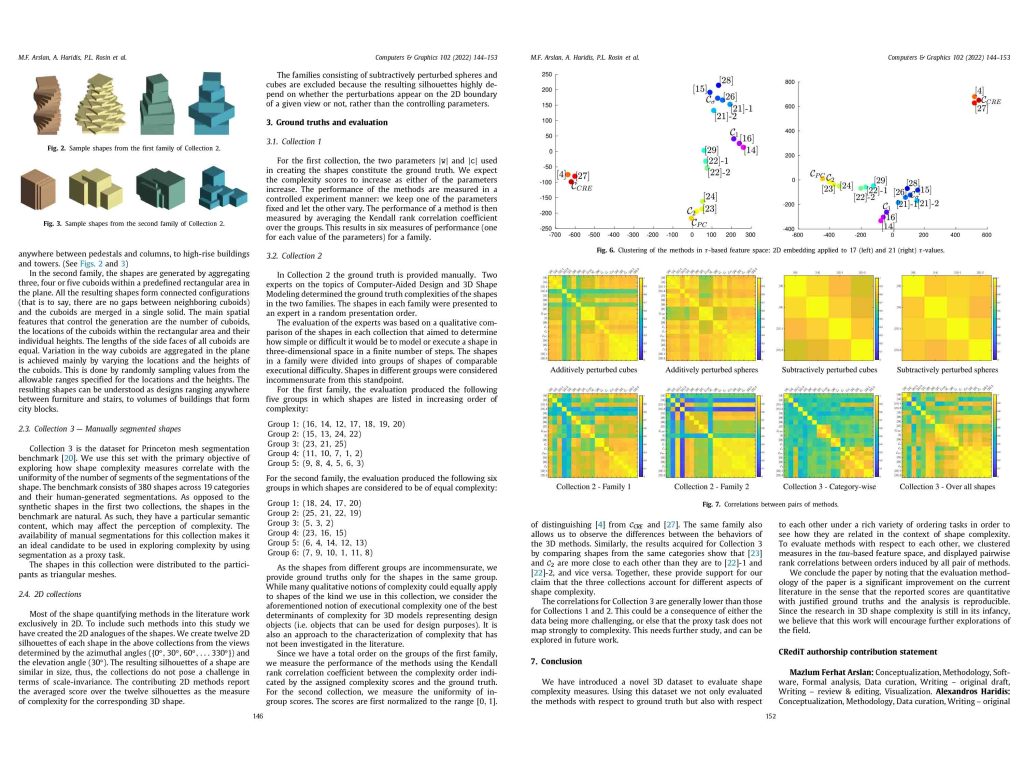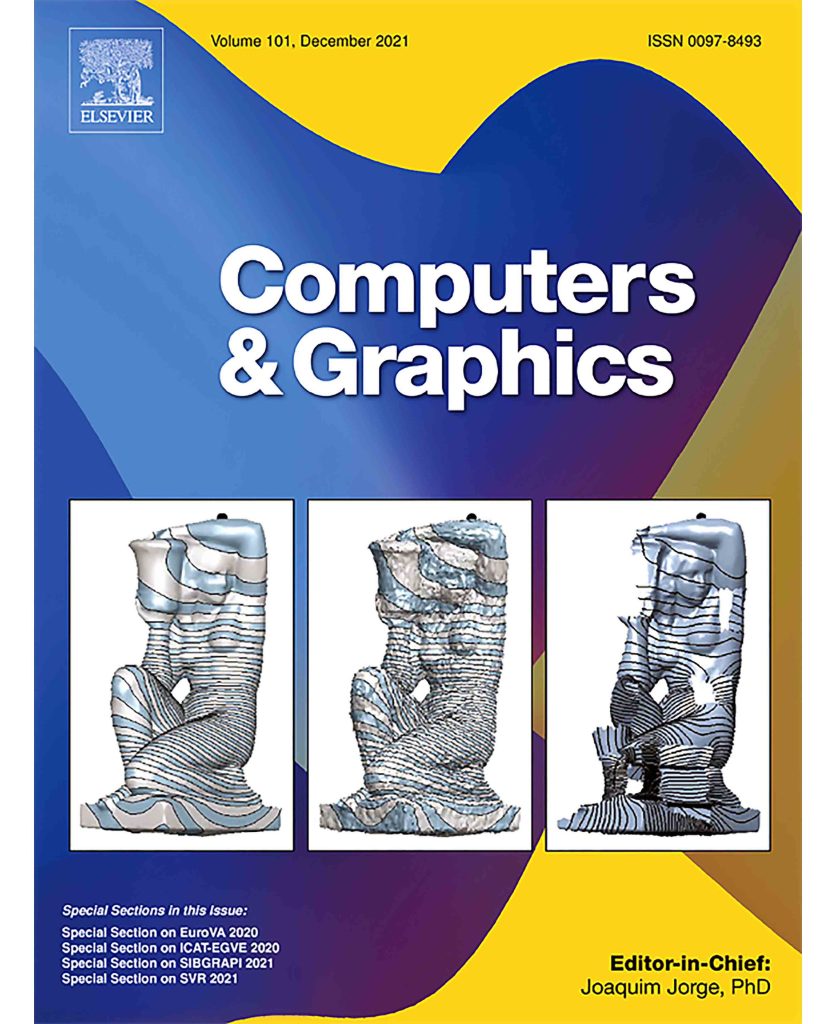
Research
Journal Article – Computers and Graphics
February 25, 2022
New peer-reviewed journal article, “SHREC’21: Quantifying Shape Complexity” appears in Computers & Graphics. The paper presents the results of SHREC’21 workshop track: Quantifying Shape Complexity, in Eurographics 2021.
Abstract
This paper investigates shape complexity measures and evaluates the relationships between these complexity measures with respect to correlations. The dataset consists of three collections. The first contains 1800 perturbed cube and sphere models classified into 4 categories. The second contains 50 shapes inspired from the fields of architecture and design with expert ground truths. Finally, the third contains data from the Princeton Segmentation Benchmark that contains 19 natural object categories.
We evaluate the performances of the methods by computing Kendall rank correlation coefficients for the orders produced by each complexity measure and the ground truths. Thus, this work is a quantitative and reproducible analysis that presents an improved means and methodology for the evaluation of 2D and 3D shape complexity.
Context
Shape complexity is studied across several fields such as psychology, design, and computer vision. In the context of 3D shapes, it has the potential to be useful in shape retrieval, measuring neurological development and disorders, in determining the processes and costs involved for manufacturing products, etc. Early work on shape complexity appears in the literature of experimental psychology as well as in literature related to design and aesthetics. The classical aesthetic notions of “unity” and “variety,” or comparably, “order” and “complexity”, are directly connected to the complexity of spatial objects.
There is a lack of benchmark datasets for shape complexity. For example, in many cases in the literature visual results are reported only without quantitative analysis. The methods are neither compared to other methods nor evaluated in terms of statistical consistency. In this paper, the goal is to account for and investigate different aspects of complexity that can help other researchers to develop and test their methods. In particular, we investigate how good the submitted shape complexity measures are (i.e. with respect to ground truth) and investigate the relationships between these complexity measures (i.e. with respect to pairwise correlations). We explore complexity using multiple tasks and multiple shape collections.

